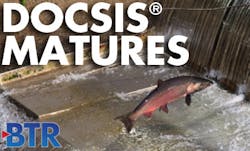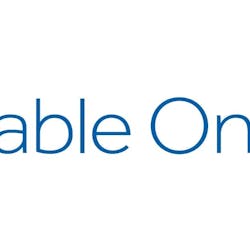There are just two areas of concern as the rollout of DOCSIS 3.0 continues: the upstream and the downstream.Observers seem satisfied that the cable industry is doing the best job possible of upgrading its legacy platform. Planners recognize that they must be proactive if they hope to create a level the playing field between their coaxial cable and the telcos' fiber, so it is not a transition that is happening without keen oversight.This is not lost on cable industry thinkers, of course. Observers say planners are hard at work on the next steps, which focus on engineering a gradual and non-disruptive switchover to IP networking and bonding downstream and -- in a particularly promising innovation -- upstream channels.In the macro-picture, the long-term planning for DOCSIS 3.0 focuses on growing its support for IP-based video. Just as the Internet has evolved in the past couple of years to be a conduit for video, cable operators are working to support multiscreen and over-the-top (OTT) on their broadband networks. It's not really a matter of choice -- it's what their subscribers are telling them they must do.John Mattson, Cisco's director of strategy and product management, said the decisions are being made in a landscape in which video demand is increasing. For cable operators, the current mix of DOCSIS and MPEG-based networks is sufficient. But, in the longer term, the shift will be toward DOCSIS for video as well as data. The choice is whether this long-term transition occurs in a rushed and disruptive or methodical manner."[Operators] are planning to maintain their MPEG networks," Mattson said. "They don't want a flash cut. Home devices are the biggest nut to cut in terms of capex and opex. They want the transition to happen naturally as people cycle out older set-tops and replace them with newer models that are more IP-enabled but with some MPEG capabilities. Set-top and gateway thinking today is a hybrid approach ... with a more gradual transition than a year or two ago."Mattson said the end game -- the migration to the Converged Cable Access Platform (CCAP) that supports both IP and MPEG -- may happen over a three- to five-year time span.Things are Looking Up(stream)A lot of the most interesting work will happen in the upstream. This is not surprising, since the cable industry has long dealt with the limitations set by its invaluable, but somewhat frustrating, last leg into homes.Planners say the next big step for DOCSIS will be in upstream channel bonding. Upstream channel bonding is not new. Indeed, it is being deployed in Japan and South Korea, said Todd Kessler, the vice president of CMTS product management for ARRIS. He looks for deployments domestically during the first half of next year.It is not an easy task. Indeed, knitting upstream channels together is a fundamentally more difficult task than the downstream. Brady Volpe, the director of research and development services and technology for JDSU, said upstream impairments and ingress are additive. Problems in the upstream path pile atop each other and are delivered to the headend, where they cause mischief to the large group of customers being served. The downstream, by its nature in delivery to a single home, is more forgiving, just as a broken-down car causes more problems on a busy highway than an empty one.An issue related to cable's traditional challenge of keeping the upstream as pristine as possible is the limitations on the modulation enabled when they are pointed back toward the headend. Volpe said the lasers are confronted with a tremendous amount of power at the point at which the transition from RF to optics is made. This can overwhelm a system and cause laser clipping.According to Kessler, a transition from Fabry-Perot (F-P) to more expensive distributed feedback (DFB) lasers may be necessary to enable operation of upstream channels at 64-QAM. Noisier environments may limit the operator to QPSK or 16-QAM lasers, he said. "DFB lasers, having higher dynamic range and lower noise characteristics, are important when an operator needs to support multiple upstream channels with relatively high modulation," he said in an email to BTR.The bottom line is that the cable industry's transition to DOCSIS 3.0 is moving along at a healthy clip. The goal is an elegant migration in terms of limited disruptions to existing subscribers and higher upstream capacity. "DOCSIS 3.0 is the big buzz right now," Volpe said. "[Operators are driving it] hard because of the competition from [other parts of] the telecom industry."Carl Weinschenk is the Senior Editor for Broadband Technology Report. Contact him at [email protected].






